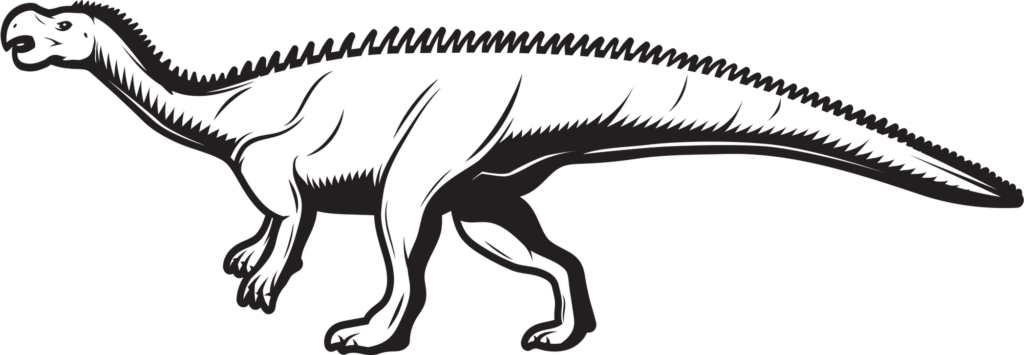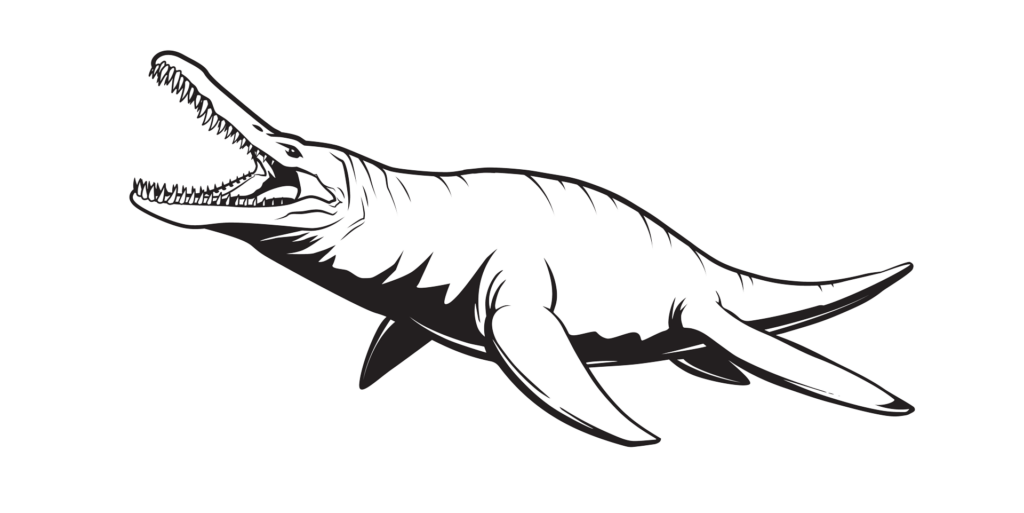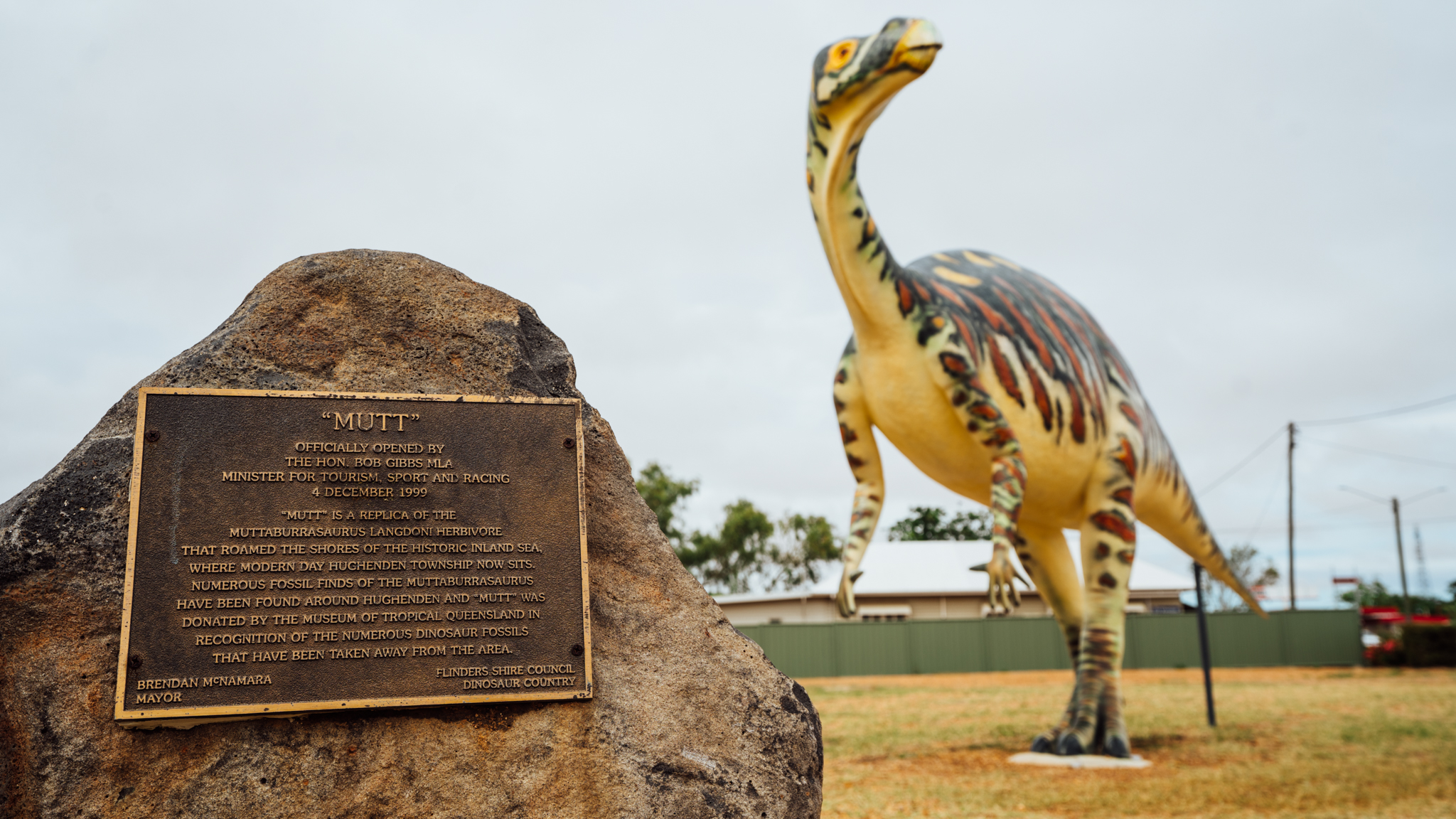Follow along the footsteps of prehistoric animals who once inhabited this ancient continent. Winton, Hughenden, and Richmond are all part of the Australian Dinosaur Trail, and each town has its own dinosaur story to tell. A trip along Australia’s Dinosaur Trail can provide you with a variety of unique experiences that cannot be found anywhere else in the world, let alone in Australia.
Hughenden sits at the edge of an ancient inland sea known now as Eromanga and was formerly home to both terrestrial, marine and even flying dinosaurs. The town is noted for its abundant dinosaur remains and spectacular primeval landscapes where fossils have been discovered since the 19th century. Embedded in the surrounding national parks and block soil downs, more than 3000 Cretaceous fossil species, including Muttaburrasaurus Langdoni and the pterodactyl-like ‘Queensland Pterosaur’ Thapunngaka Shawi, have been discovered in the Hughenden region.
A Seaside Prehistoric Paradise
Hughenden, our beautiful outback town, would have been a coastal paradise one hundred million years ago, located on the coast of the ancient Eromanga Sea. At the time, Australia resembled an archipelago with land to the east and west, unrecognisable to us today. The lost Eromanga Sea was ruled by marine reptiles, plesiosaurs, ichthyosaurs – Marine dinosaurs that most would compare to the Loch Ness monster, and some that resembled enormous dolphins.
The east-central portion of Australia dropped by as much as 350 metres when continental drift separated it from Antarctica 120 million years ago. When the water inundated the lowlands, the icy epeiric Eromanga Sea formed. This frosty invasion lasted around twenty million years and left its mark.
Our Ancient Neighbours
While they are unlikely to drop by for a cuppa or to borrow some flour anytime soon, let’s learn about some of the beasts that were once Hughenden’s ancient neighbours.
The Muttaburrasaurus Langdoni

Lived: 105.3 – 93.5 million years ago
Approximate Height: 8 metres (26 ft)
Approx Weight: 2.8 Tonnes
Muttaburrasaurus was a huge plant-eating ornithopod that lived in eastern Australia during the Early Cretaceous period. The skull of Muttaburrasaurus was distinctive, with a large, rounded snout. Our Muttaburrasaurus display is one of Australia’s most complete dinosaur skeletons, as well as the first to be cast and mounted for exhibition.
The Thapunngaka Shawi

Lived: over 105 million years ago
Approximate Height: 4-6 metres (15-20 ft)
Approximate Wingspan: 5.83 to 9.47 metres (19.1 to 31.1 ft)
The carnivorous Thapunngaka shawi, a 30-foot-long flying reptile with a three-foot-long head had 40 razor-sharp teeth, filling a mouth like a “spear”. Thapunngaka shawi was discovered in Queensland, Australia and likely cast a fearsome shadow over the dinosaurs and large ancient fish of the prehistoric Eromanga Sea, which covered much of what is now the Outback.
The Kronosaurus

Lived: 145 – 100 million years ago
Approximate Length: 9 to 10.9 metres (30 to 36 ft)
Approx Weight: 10.6 to 12.1 Tonnes
Swimming in the waters off the coast of prehistoric Hughenden was the Kronosaurus, which was among the largest pliosaurs and is named after the leader of the Greek Titans, Kronos. It lived in the Early Cretaceous period. Like other pliosaurs, Kronosaurus was a marine reptile. It had an elongated head, a short neck, a stiff body propelled by four flippers, and a relatively short tail. Fossilised Kronosaurus’ stomach contents found in Northern Queensland show that it preyed on turtles and plesiosaurs.
Want to dig deeper into Hughenden’s Ancient Past?

From the earliest dinosaur fossil discovered in the area in 1865 to modern-day dinosaur digs, a visit to the Flinders Discovery Centre will take you on a journey through the time of dinosaurs. When you meet ‘Hughie,’ a life-size skeleton model made from the genuine bones of a 110-million-year-old Muttaburrasaurus discovered in the Hughenden district, your eyes will explode.
The neighbouring Porcupine Gorge, 60 kilometres north of Hughenden, is nothing short of breathtaking. Its magnificent canyon exposes sedimentary rock strata dating back hundreds of millions of years to when the waters of the Eromanga bordered Hughenden.
If that doesn’t satisfy your craving for outback Australian history, consider travelling back in time by following the Australian Dinosaur Trail — This world-famous outback path connects the towns of Hughenden, Richmond, and Winton, which are home to some of the best-preserved fossils in the world, strewn over Outback Queensland for hundreds of millions of years.
Discover 98 million-year-old dinosaur bones, evidence of a dinosaur stampede, the biggest Australian fossil collection, and ancient marine reptile fossils at this historical centre 1,350 kilometres west of Brisbane or 380 kilometres east of Townsville.
Click here for more information on the Australian Dinosaur Trail
Further Reading
https://australian.museum/learn/dinosaurs/fact-sheets/muttaburrasaurus-langdoni/
https://www.sciencedaily.com/releases/2021/08/210809100448.htm
Back to all News